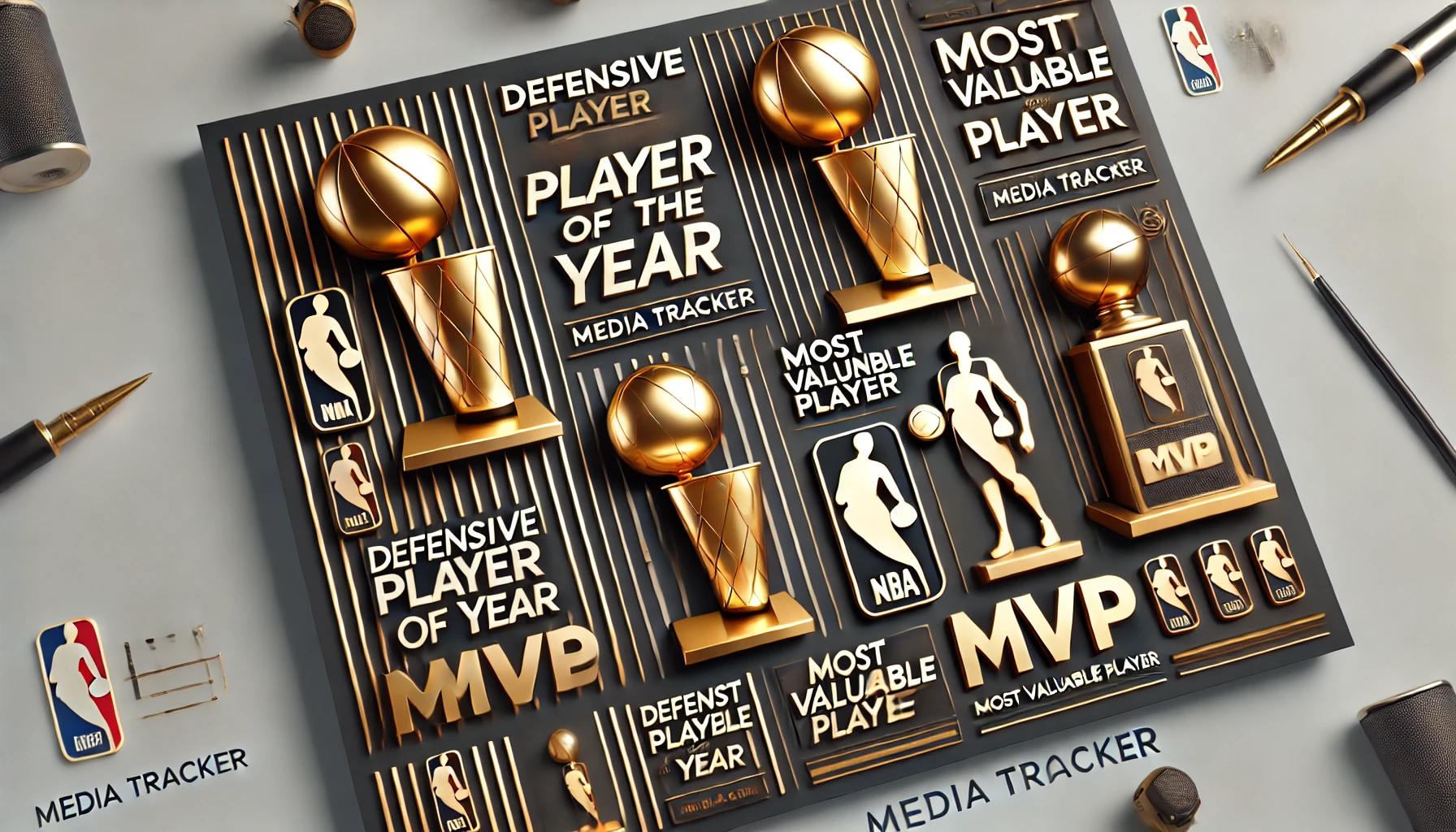The voting process for the NBA’s most prestigious awards—such as MVP, DPOY, and its All-NBA Teams—has always been fairly ill-defined in terms of both who votes and how they voted. The rules have changed drastically over the years and the full voting results weren’t even published until the 2015 season.
Since that 2015 season, the NBA has released the results as PDF-formatted documents tabulated by Ernst & Young LLP. And while this was certainly a major step forward in transparency, the format isn’t very useful for data analysis.
I’m working on changing that.
Why is this important?
In 2016, the NBA players and Board of Governors ratified a new Collective Bargaining Agreement. This agreement included a “designated player” exception that allows a team to sign one of its own players to a five-year maximum contract extension, according to the following criteria:
- He makes one of the three all-NBA teams or is named either defensive player of the year or most valuable player the previous season.
- He has made one of the three all-NBA teams or has been named defensive player of the year in two of the prior three seasons or the league’s most valuable player in one of the three prior seasons.
This exception comes in addition to the well-known “Derrick Rose Rule,” which incentivizes making All-NBA teams during a player’s first four years. In response to the heightened stakes of its media-based awards, the NBA also made a few changes to its voter-selection process:
- Decreased the number of eligible voters for each award from 130 to 100.
- Limited the selection pool to “independent” media members (no radio/television broadcasters or writers associated with a particular team).
- Required at least one voter per NBA market.
In total, the NBA’s media-based awards have more meaning than ever and understanding the process has become all the more important.
Exploring the data
The NBA has 9 distinct media-chosen awards, each with its own number
of placements and scoring system (more on that later). The table below
summarizes each voter’s ballot for a given award—Most Valuable
Player (MVP), Coach of the Year (COY), Rookie of the Year (ROY),
Defensive Player of the Year (DPOY), Most Improved Player (MIP),
6th Man of the Year (6th), All-NBA (All-NBA), All-Defense
(All-Defensive), and All-Rookie (All-Rookie).
Analyzing the data
The ultimate goal of this project is to provide a means of assessing the quality of a given ballot. A common complaint with the existing process is that voters are somehow “biased” or are actively supporting a certain “narrative.” Unfortunately, although it’s straightforward to describe the perceived problem, it’s much harder to actually identify it in practice.
For example, one of the most high-profile cases in recent times was Gary Washburn’s decision to select Carmelo Anthony over LeBron James as the 2013 MVP, effectively robbing him of the chance to become the NBA’s first unanimous choice (a feat Stephen Curry would later accomplish in 2016).
”I was heated,” James told Chris Haynes, then of Cleveland.com. “But I knew all along [I wasn’t getting a unanimous vote]. I just knew it, man.”
— A brief history of LeBron James disagreeing with awards voters
While you might be tempted to say that identifying unusual ballots (such as Washburn’s) is a good indication of poor choices, it’s really not that simple—indeed, what if it’s the consensus itself that’s “wrong”?
This was exactly the case in 2021, according to Jayson Tatum:
“I know I should have made it with the season I had,” Tatum told host Ashley Nevel. “I mean $33 million on the line. Obviously, that would make anyone feel some type of way. And I wasn’t necessarily upset about losing the money. I think I just felt like the way I was playing, everything I did, I thought it should have been a no-brainer. I think I was just more frustrated with that.”
However, even if it may not be possible to derive objective conclusions from an inherently subjective process, we can still perform some interesting data analysis.
The Washburn Index
The first type of analysis we’ll perform is pretty standard in the fields of data science and statistics: the search for outliers in our data set.
But what exactly constitutes an outlier?
To answer this question, we must first understand the two types of
ballots: there are ranked lists (MVP, COY, DPOY, …) and team
selections (All-NBA, All-Rookie, and All-Defensive).
For ranked-list awards, we define outliers as ballots that are the most dissimilar to the final result (the consensus). To help us do this, we’re going to use the Rank-Biased Overlap (RBO) metric.

The RBO metric is a bounded ([0, 1]) similarity measure that includes
top-weightedness: (dis)agreements at the top of two lists will
weigh more heavily than the same (dis)agreements towards the bottom
of the lists.
Below is a visualization of all RBO values for each ranked award.
The Tatum Indicator
During the same interview in which Jayson Tatum expressed his displeasure with the 2020-21 All-NBA 3rd Team voting results, he also alluded to the need for a more objective criteria for making these All-NBA teams:
“I think what they do need to change is – it’s kind of opinion-based,” he explained. “100 media members have the vote, and what’s the criteria, right? Is there a certain amount of games you need to play. Should you be in playoff contention? …”
While the NBA is unlikely to implement such a criteria any time soon, the idea leads to an interesting question: Is there an implicit criteria that the media follows? We can begin to answer this by constructing a profile of what it takes—historically—to make an All-NBA team.
